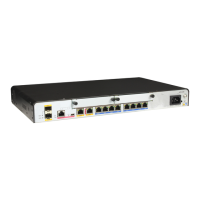Figure 2-14 Networking diagram for configuring synchronization between LDP and IGP
Loopback1
3.3 .3 .9/3 2
Loopback1
2.2 .2.9/3 2
P 1
Loopback1
1.1 .1.9/3 2
Loopback1
4.4 .4 .9/3 2
P 2
P 3
P E 2
G
E
1
/
0
/
0
1
0
.
1
.
1
.
1
/
3
0
G
E
2
/
0
/
0
1
0
.
3
.
1
.
1
/
3
0
G
E
1
/
0
/
0
1
0
.
1
.
1
.
2
/
3
0
G
E
2
/
0
/
0
1
0
.
2
.
1
.
1
/
3
0
G
E
1
/
0
/
0
1
0
.
3
.
1
.
2
/
3
0
G
E
2
/
0
/
0
1
0
.
4
.
1
.
1
/
3
0
G
E
1
/
0
/
0
1
0
.
2
.
1
.
2
/
3
0
G
E
2
/
0
/
0
1
0
.
4
.
1
.
2
/
3
0
P rim ary link
B ypass link
P E 1
Configuration Roadmap
The configuration roadmap is as follows:
1. Establish LDP sessions between neighboring nodes and between P1 and PE2.
2. Configure LDP and IGP synchronization on the P1 and P2 interfaces. P1 is the crossing
node of active and standby links and P2 is the LDP neighboring node of the active link.
3. Configure the values of the hold-down, hold-max-cost, and delay timers on the P1 and P2
interfaces.
Data Preparation
To complete the configuration, you need the following data:
l IP addresses of the interfaces, OSPF process number, and the area
l Values of the hold-down, hold-max-cost, and delay timers
Procedure
Step 1 Assign IP addresses for the node interfaces and the address of the loopback interface as the LSR
ID, and advertise routes using OSPF. The detailed configurations are not provided here.
The link PE1 -> P1 -> P2 -> PE2 is an active link and the link PE1 -> P1 -> P3 -> PE2 is a
standby link. The cost value of GigabitEthernet 2/0/0 on P1 is 1000.
After completing the configuration, run the display ip routing-table command on each node.
They have learned routes from each other. The outbound interface of the P1 route is
GigabitEthernet 1/0/0.
In the following example, the display on P1 is used.
<P1> display ip routing-table
Huawei AR1200 Series Enterprise Routers
Configuration Guide - MPLS 2 MPLS LDP Configuration
Issue 01 (2011-12-30) Huawei Proprietary and Confidential
Copyright © Huawei Technologies Co., Ltd.
112

